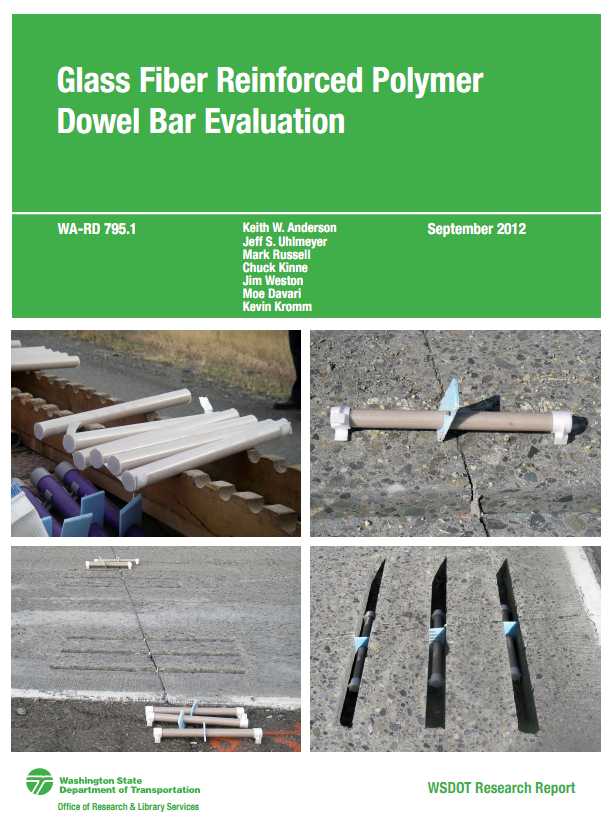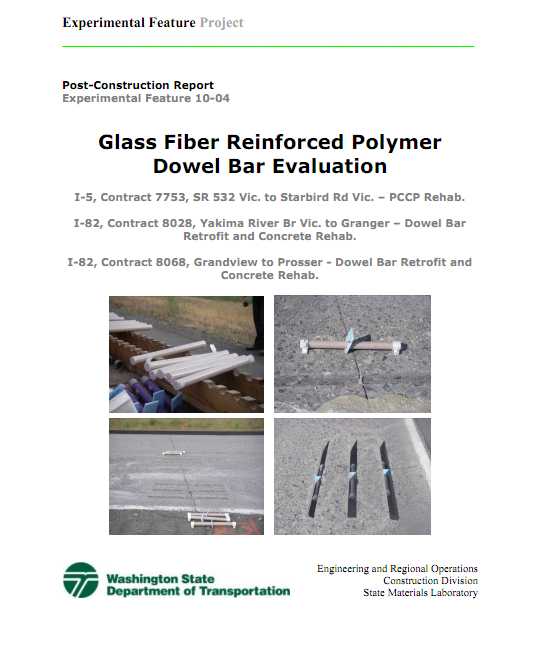Glass Fiber Reinforced Polymer Dowel Bar Evaluation


Introduction
WSDOT designs concrete pavements to have a 50-year or more pavement life. In order to achieve this performance, every component of the pavement structure must be able to achieve this 50+ year life. WSDOT has demonstrated that the concrete pavements constructed in the late 1950’s to early 1960’s without doweled joints were only able to obtain a 50-year or more pavement life by retrofitting the joints with dowel bars to eliminate future faulting and diamond grinding to eliminate faulting. As a result of this, all new concrete pavements constructed since 1992 have required steel dowel bars at each transverse joint.
The use of dowel bars does not necessarily ensure that a 50-year performance life will be obtained. WSDOT and several other states have observed that the corrosion of epoxy coated dowel bars occurs within 15 to 20 years. Therefore, it is desirable to obtain and use dowel bars that have the ability to resist corrosion. WSDOT only allows dowel bars that have proven to be highly resistant to corrosion to be used in the construction of new pavements. The types of dowel bars currently allowed are solid stainless steel, stainless steel clad, stainless steel tubes with epoxy coated inserts, high chromium steel (MMFX) or zinc clad steel dowel bars. Epoxy coated steel bars are not allowed for use in new concrete pavements due to their inadequate resistance to corrosion due to small holes in the epoxy coatings or damage that often occurs during handling of the bars during the construction process. However, epoxy coated dowel bars are allowed for dowel bar retrofit (DBR) and panel replacement applications because these are fixes that we expect to be in place for no more than 20 years. Fiber reinforced polymer (FRP) and glass fiber reinforced polymer (GFRP) dowel bars are not currently allowed except as part of an experimental feature.
Literature Search
Fiber reinforced polymer (FRP) and glass fiber reinforced polymer (GFRP) dowel bars appear to be a promising alternative to conventional metal bars because of their non-corrosive properties. FRP and GFRP consist of a binder, a strong reinforcing element, and inert materials. The binders can be either a resin or polymer material such as polyester, vinyl ester or epoxy.
Download
*